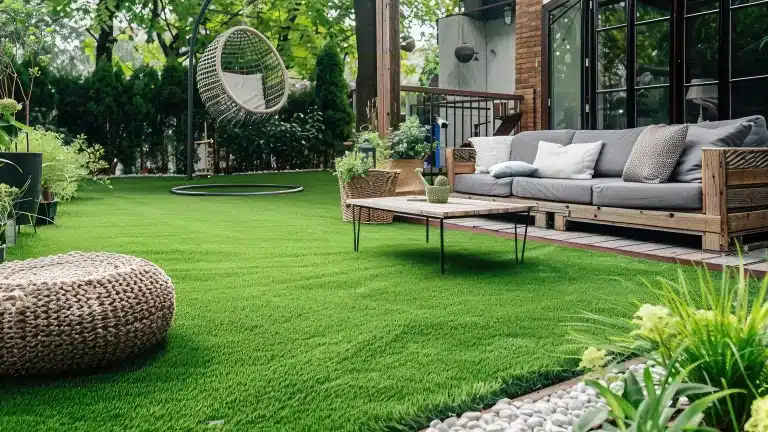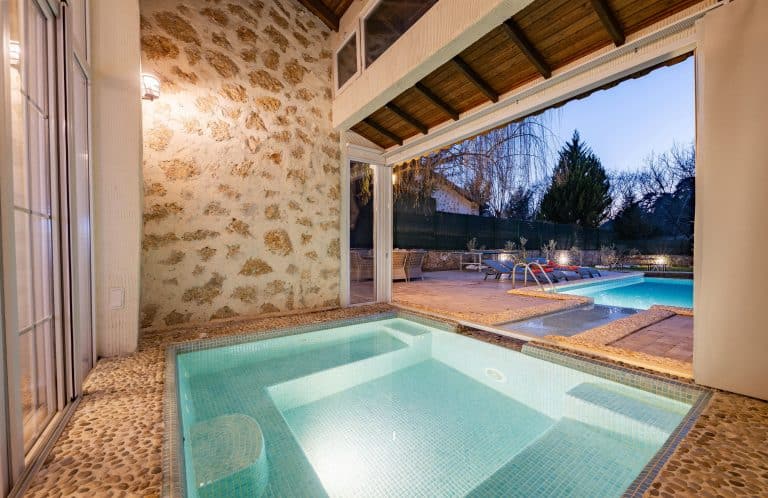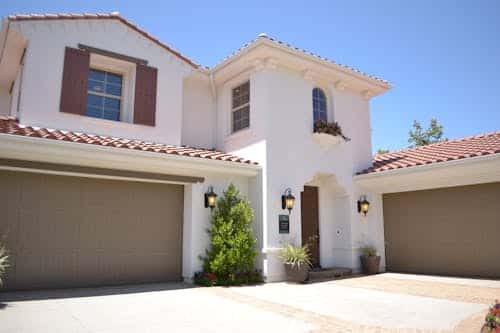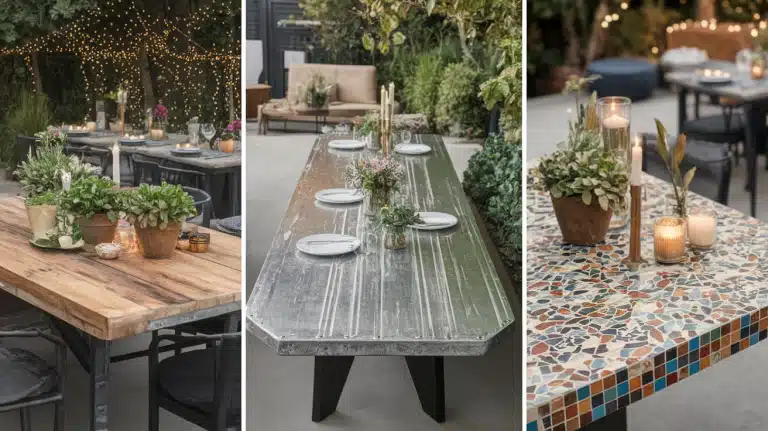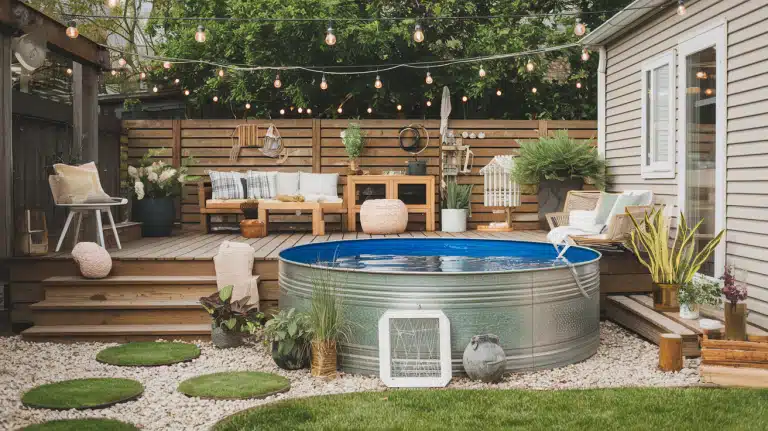Transforming Your Outdoor Space: Steel Structures for Patios and Garden Areas
Transforming your outdoor space with steel structures can provide both functionality and aesthetic appeal.
Steel structures offer durability and design flexibility, making them a popular choice for enhancing patios and garden areas.
These structures effortlessly complement any landscape style and withstand various weather conditions, ensuring long-lasting enjoyment of your outdoor space.
When incorporating steel structures, homeowners can customize their design to suit personal preferences and garden environments.
Whether it’s a sleek pergola, a stylish gazebo, or a robust patio cover, the versatility of steel allows for a wide array of options. This customization potential makes steel an ideal material for creating unique and personalized outdoor areas.
Additionally, steel metal buildings require minimal maintenance, making them a practical investment for time-saving homeowners.
A simple wash and occasional inspection are often enough to maintain their appearance and structural integrity. Steel’s resilience against pests and decay further adds to its list of benefits, offering a smart and efficient solution for upgrading outdoor spaces.
Design Considerations for Steel Structures in Outdoor Spaces
When designing steel structures for outdoor areas, the focus is on selecting suitable materials and integrating aesthetics with practicality. A careful approach ensures that the structure complements the surroundings while maintaining durability and functionality.
Choosing the Right Steel Metal Building for Your Space
Selecting the appropriate steel metal building involves understanding different steel types and their suitability for specific environments.
Galvanized steel offers enhanced corrosion resistance, making it a preferred choice for humid climates. Evaluating the thermal expansion properties of steel helps ensure that it remains stable under temperature fluctuations.
It is crucial to consider the intended use of the space, whether it’s for a patio, garden area, or combined setting.
Prefab steel buildings come in various shapes and sizes, allowing customization to fit specific spatial requirements. Additionally, examining the local building codes and zoning laws is necessary to align the structure with legal standards.
Integrating Aesthetics and Functionality
Balancing aesthetics with functionality requires thoughtful design elements. Incorporating architectural accents, like arches or decorative panels, can enhance visual appeal without compromising structural integrity.
Steel’s versatility allows it to blend seamlessly with other materials, such as wood or glass, creating a cohesive look.
Lighting design also plays a pivotal role in transforming the space. Strategic placement of outdoor lighting accentuates architectural features while providing safety and comfort.
Furthermore, considering the incorporation of natural elements, like plants and water features, helps soften the industrial feel of steel structures, creating a more inviting outdoor environment.
Installation Process of Steel Patio and Garden Structures
Installing steel structures for patios and gardens involves preparing a solid foundation and carefully assembling the components. Attention to detail and proper planning ensure stability and longevity.
Preparing the Groundwork
Begin by selecting a level site, free from debris. It is crucial to assess soil quality and drainage capabilities. For stability, the foundation type—whether concrete slab or piers—should be determined based on the soil and climate conditions.
After deciding on the foundation, mark boundaries using stakes or spray paint. Excavate as needed, ensuring adequate depth for footings or slabs.
A compacted gravel base may be needed for drainage, offering resilience against moisture. Rebar placement or wire mesh enhances structural integrity.
Once the footing or slab is set, cure the concrete according to the manufacturer’s instructions. This ensures a firm, stable base, ready to support the steel structure’s weight without shifting or cracking over time.
Assembling the Steel Structure
Verify all materials and fasteners before beginning assembly. Organize components by referring to the included schematic or manual. Steel frames typically come pre-drilled, simplifying the assembly process.
Begin with the base, anchoring it to the prepared foundation securely. Use torque-controlled or adhesive-bonded anchor bolts for optimal strength. Follow the manufacturer’s guidelines to prevent misalignment or weakening.
Once the base is secured, the vertical supports and crossbeams are assembled next. These parts typically fit together using bolts and brackets, reinforced by bracing where needed. Confirm all connections are tight and components level.
Complete the assembly with roofing or additional features such as awnings. Ensure each element is secured against weather conditions.
Proper sealing against moisture can extend the structure’s durability. Double-check all joints and connections to ensure everything is securely and correctly fastened.
Maintenance and Upkeep of Steel Outdoor Structures
Regular care is essential to maintain the aesthetic and structural integrity of steel outdoor structures. Attention to detail during upkeep will ensure long-lasting durability.
Routine Maintenance Tips
Regular inspection helps prevent minor issues from developing into significant problems.
Examine the steel for any signs of rust or corrosion, particularly in areas frequently exposed to moisture.
Clean structures with mild soap and water, using a soft brush to avoid scratching the surface.
Protective coatings can enhance longevity. Apply a layer of rust-resistant primer and paint as needed to shield the steel from environmental factors.
Inspect bolts and screws regularly, tightening any that have loosened over time. Lubricate movable parts to reduce friction and wear.
Longevity and Durability Factors
Environmental factors play a vital role in the lifespan of steel structures. Moisture and humidity, for instance, can accelerate corrosion if not properly managed. Consider location and exposure to elements when planning maintenance schedules.
Steel’s inherent durability benefits from proper care. Use high-quality sealants to prevent water ingress. Incorporate drainage solutions to divert water away from foundations and bases.
Implement a maintenance routine that considers seasonal changes to address different conditions throughout the year.
Benefits of Using Steel in Outdoor Living Areas
Steel offers numerous advantages for outdoor spaces. Its sustainable properties and cost-effectiveness over time are key benefits that make it an ideal choice for patios and gardens.
Sustainability and Eco-Friendliness
Steel is a highly recyclable material, with most steel products made from a significant percentage of recycled content. This reduces waste and conserves natural resources, positioning steel as an eco-friendly option for outdoor structures.
The durability of steel means reduced need for repairs and replacements, which minimizes environmental impact.
Additionally, steel production processes continue to evolve, reducing emissions and energy consumption. By choosing steel, homeowners contribute to a more sustainable and less environmentally taxing economy.
Cost-Effectiveness Over Time
While initial costs of steel structures might seem high, their longevity ensures they offer great value over time. Steel’s resistance to weather-related wear and tear reduces maintenance and replacement costs.
They remain structurally sound over the years, maintaining their aesthetic appeal with minimal upkeep.
Moreover, steel can be prefabricated, which simplifies the construction process and reduces labor costs. This efficiency often balances out any initial investment, resulting in long-term savings for the homeowner.
For those seeking cost-effective enhancements to their outdoor living areas, steel structures present an attractive option.


